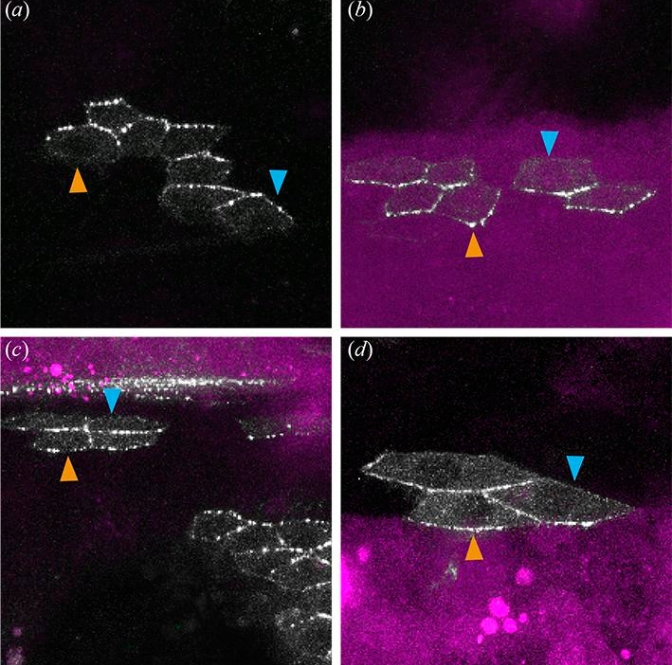
Submitted by Debbie Birkett on Tue, 01/11/2022 - 14:18
This work documents one final step in a scientific journey of 60 years. It is exactly 60 years since I (Peter) first had the idea, when a graduate student playing in a sandbox on the 3rd floor of the Zoology Department, that planar polarity might depend on a gradient of some molecule. The hypothesis was that cells are polarised by the slope of a molecular gradient of a morphogen. At that time the source of this morphogen was not known, no molecules were identified, and we didn't know the mechanism that might translate the gradient into cell polarity. Now we know there at least two separate molecular systems that polarise cells (involving, possibly two gradients of membrane proteins, one of which is Dachsous). Although many indirect experiments argued that the slope of a gradient of Dachsous is read to orient cells there were no direct measurements. Later, we hypothesised that the gradient of Dachsous could result in the asymmetrical disposition of cell-cell bridges. Over the last 20 years we have collected indirect evidence suggesting how this gradient might be shaped, where it might begin and end and how it would affect the intracellular distribution of Dachsous. At last we have been able to demonstrate and measure this gradient over a whole metameric segment of Drosophila in vivo. We are happy as most of our predictions are correct, importantly regarding the mutual dependence of a supracellular slope of the Dachsous molecule and its polarised distribution within each cell. It is intriguing that there are also a few surprises: The gradient is oriented and reflexed as we predicted but is not as steep as we imagined. It is not quite in register with the segment, as we expected it to be, and this latter point raises some new question marks. Our experiments have clarified the function of a regulator of the Dachsous gradient (the molecule Four-jointed), which has a somewhat enigmatic effect on the intracellular distribution of Dachsous.
Adrià Chorro, Bhavna Verma, Maylin Homfeld, Beatríz Ibáñez, Peter A. Lawrence and José Casal Published in Open Biology, 12 October 2022 https://doi.org/10.1098/rsob.220195
(Figure 1) Asymmetric localization of Dachs vis-à-vis A/P boundary. The areas shown are largely covered with clones lacking tagged D.
